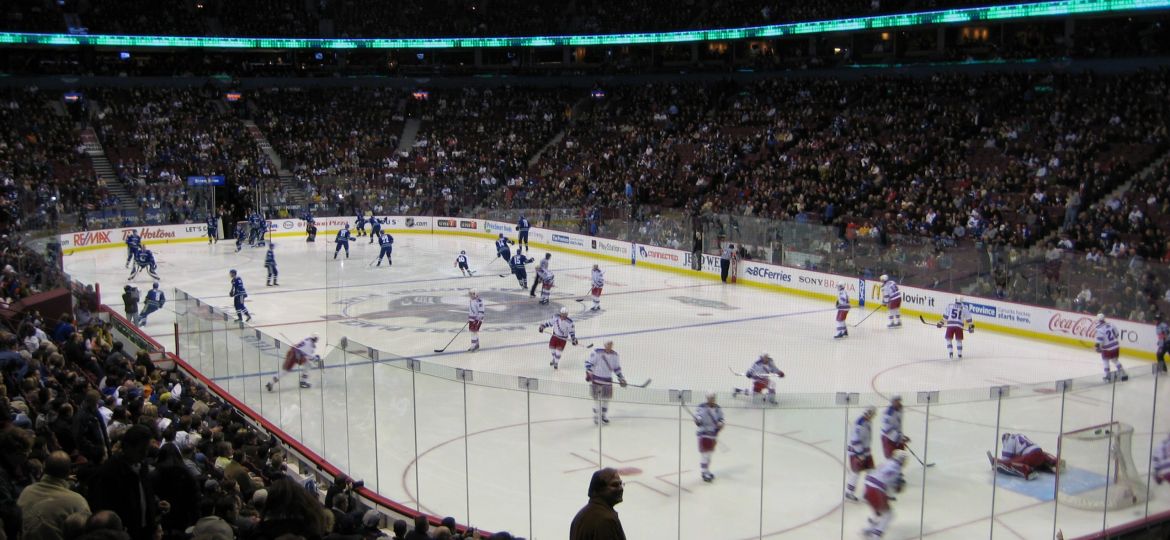
As part of the fundraising campaign “For the Hill and Beyond,” St. Olaf has launched “Bring Ice Home,” an initiative that aims to raise six million dollars for the construction of an on-campus ice arena in what is currently the field house in Skoglund Athletic Center. At press time, “For the Hill and Beyond” has met 62 percent of its 200 million dollar goal and “Bring Ice Home” has met 30 percent of the six million dollars it must raise.
The “Bring Ice Home” campaign has been largely advertised on the St. Olaf website and social media. This includes the rink’s own webpage, which features virtual tours of the proposed rink along with student testimonials to the value it would have for the St. Olaf community.
“We’ve had a lot of buzz about it. We feel like we have a lot of momentum right now,” athletic director Ryan Bowles said. “A lot of people are working really hard to promote this, to solicit and identify donors. It’s been a true team effort in that regard.”
He emphasized that there was no definite deadline on the fundraising, but that they aimed to raise the funds quickly so they could start construction.
“Once we raise the funds, 12 to 18 months would be construction time,” Bowles said. “Probably closer to 12 months is what we think.”
The rink may also have some revenue-generating power.
“We charge game tickets and we charge concessions now for some of our programs, so that would continue for sure,” Bowles said. “I think there would be rental opportunities, but our primary responsibility is to make sure that it serves the entire St. Olaf community.”
He continued to describe the arena’s benefits for the existing curling club and broomball teams, giving them an indoor facility on campus to practice and compete. He also noted the utility of the arena for the hockey team’s recruiting.
“We will be able to attract the talent, in our men’s and women’s programs, that will allow us to be top 10 in the country,” Bowes said. “But I also think it will help overall recruitment to the campus. This ice really benefits all 3,000 students.”
However, the arena would come at a cost. Many of St. Olaf’s athletic groups, including the tennis and soccer teams, a number of intramural and club sports teams and several classes use the field house when the weather does not permit outdoor practice.
Scott Nesbit, the coach of the men’s and women’s tennis teams, addressed the current situation, noting the difficulty of holding tennis practice on the floor of Tostrud Center because the surface causes balls to bounce too quickly.
“You couldn’t play any games, you couldn’t do any point situations,” Nesbit said.
One possible solution to the problem that Nesbit addressed is a plan to resurface the floor of Tostrud to make it more conducive to tennis. While this would help the tennis team in the immediate future, there is also a proposal in the Framework plan to eventually construct another field house on the land behind Skoglund to accommodate the lost practice space.
“You can say we are adding this rink, but really it is taking away more than it gives … there are going to be more people who lose out than gain,” Nesbit said. “But in the long run, it is going to be much better. Club teams and intramural teams are going to get a nicer space, tennis teams are going to get a nicer space.”
Despite the prospect that the space would ultimately be filled with superior facilities, Nesbit expressed concern at a possible interim period between the beginning of the ice arena’s construction and the creation of alternative practice space for displaced teams, clubs and classes. He referred to a time earlier in his career at St. Olaf before Tostrud existed as a practice space. He recalled that only having the field house for indoor practice gave club and intramural teams little to no chance to reserve practice times.
“Classes were in there the whole time basically, and then as soon as 3:30 hit, the teams went in there until 11:30,” Nesbit said.
Among the teams to feel the immediate impact of the loss of the field house as a practice space is Vortex, one of St. Olaf’s Ultimate Frisbee teams. Tulsa Douglas ’18 and Aidan Zielske ’18, both members of Vortex, expressed their concerns about being displaced by the ice arena.
“There would be half the space that there is currently for indoor use in the winter,” Douglas said. “Basically, there wouldn’t be any time for club sports.”
“For us, the frustrating part is that we just wouldn’t get to practice, and we’ve gotten fifth at national three years ago and third last year and for us we are competing at a very high level,” Douglas said. “If we lost a whole chunk of our year it would definitely be detrimental to our team.”
“We consistently perform well, push ourselves, practice constantly and travel across the country,” Zielske said, adding that she felt those efforts often go without recognition.
Douglas and Zielske both emphasized that they did not oppose the construction of the ice arena in principle, but were opposed to the project so long as they were not offered an alternative practice space.
“It will be cool to go to hockey games, but when it says it will benefit all 3,000 students, it will actually hurt us more,” Douglas said.
campbe1@stolaf.edu

